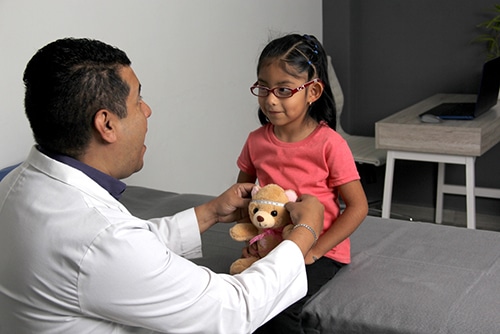Understanding Autism and ADHD
Autism Spectrum Disorder (ASD) and Attention Deficit Hyperactivity Disorder (ADHD) are conditions that may exhibit similar traits yet possess unique characteristics. Lets delve into the specifics of each condition and explore the complexities involved in distinguishing between them.
What Are Autism and ADHD?
Autism is a disorder that can make interactions and communication challenging often accompanied by repetitive behaviors. It typically manifests in childhood. Persists, throughout ones life. In contrast ADHD is a disorder that can lead to difficulties, in focusing staying still and regulating impulses. While it is commonly identified in children it may also continue into adulthood.
Both disorders can impact skills and behavior. They manifest differently. Autism primarily influences communication and social interaction while ADHD is characterized by difficulties, in concentration, hyperactivity and impulsive behavior. Recognizing the distinctions in symptoms between autism and ADHD is crucial, for diagnosis and effective treatment.
Success Stories
“Move Up ABA has been a lifeline for our family. Before starting therapy, our son struggled with daily routines and communication. Now, he’s more independent and even initiated a conversation with a classmate for the first time! The progress we’ve seen in just six months is truly remarkable.”
- Emily R., Silver Spring, Accountant
“As a single dad, I was overwhelmed trying to manage my child’s behavior. The Move Up ABA team not only provided amazing support for my little girl but also taught me practical strategies to use at home. Their in-home sessions fit perfectly with our busy schedule. I’m so grateful for their patience and expertise.”
- Michael T., Rockville, Middle School Teacher
“We were hesitant about starting ABA therapy, but Move Up ABA’s approach put us at ease from day one. Our twins have made incredible strides in their social skills and self-regulation. The therapists are like extended family now, and we couldn’t be happier with our decision to work with them.”
- Aisha and James L., Simpson, Police Officers
Ready to start your child's journey to success? Schedule a free consultation today! 📞 Call (410) 497-8865.
How Common Are They and How Do You Diagnose Them?
ADHD is quite prevalent, among children impacting 8.4% of them and persists in 2.5% of adults. Boys tend to receive ADHD diagnoses than girls. In the U.S. autism affects 1 in 59 children with boys being five times more susceptible, than girls.
Determining whether someone has either of these conditions can be challenging as the symptoms can vary widely and may resemble issues. Previously it was uncommon to identify individuals, with both conditions. However since 2013 medical professionals have acknowledged the coexistence of both leading to increased intrigue, in diagnosing and managing these conditions.
| Condition | Prevalence in Kids | Prevalence in Adults | More Common in |
| ADHD | 8.4% | 2.5% | Boys |
| Autism | About 1 in 59 | – | Boys |
To delve deeper into the variances, between autism and ADHD exploring how they may manifest concurrently and the implications for treatment refer to the sections on co occurrence, comorbidity and diagnostic approaches. Additionally gaining insight into treatment choices such as behavioral therapy and medication is crucial, for individuals supporting those affected by these disorders.
Spotting the Differences in Symptoms
Detecting whether a child has autism or ADHD can pose a challenge due, to the overlapping symptoms. However understanding the differences in their social interactions and communication patterns is crucial, for accurate diagnosis and appropriate assistance. Lets delve into the distinctions.
Social Interaction and Communication

Detecting if a child has autism or ADHD can be tricky because of the symptoms they may exhibit. It’s important to recognize the variations, in how they interact and communicate to ensure diagnosis and provide the right support. Lets explore these differences further.
| Condition | Social Interaction | Communication Skills |
| Autism | Struggles with social cues | Difficulty expressing thoughts |
| ADHD | Interrupts and talks excessively | May stray off-topic but understands pragmatic language |
Children diagnosed with ADHD frequently struggle to maintain attention during tasks. May avoid activities requiring prolonged focus. Conversely children, on the autism spectrum can exhibit concentration on their interests occasionally tuning out everything, around them.
Behavioral Patterns
Distinguishing between autism and ADHD can also be based on patterns. Children, with autism tend to prefer routines and repetition often forming attachments to objects or habits. On the hand children with ADHD typically show a dislike, for tasks and seek out variety even though adhering to a routine could benefit them.
Children diagnosed with ADHD may display behavior. Exhibit excessive goofiness, at inappropriate moments thereby deviating from societal expectations. Additionally they encounter difficulties in terms of planning and organizing tasks a challenge frequently observed in individuals, with autism.
| Condition | Preference for Repetition | Executive Functioning |
| Autism | High preference for routine and order | Not typically affected |
| ADHD | Dislikes repetitive tasks | Struggles with organization and planning |
Understanding these distinctions is crucial, for parents, educators and healthcare professionals to address each disorder. For an exploration of the variances between autism and ADHD delve into our analysis. When considering treatment choices delve into medications for autism and ADHD while taking into account the requirements of individuals affected by these conditions including adults, with autism and ADHD.
Autism and ADHD: When Two Worlds Collide

Autism and ADHD: A Complicated Relationship
Autism and ADHD are both conditions that originate in the brain and can appear similar posing a challenge when it comes to diagnosis. In the past there was a belief, among professionals that having both conditions concurrently was unlikely. However as of 2013 the diagnostic criteria have been updated, allowing for the possibility of being diagnosed with both conditions.
Research indicates a correlation, between the two conditions. 30 to 80 percent of children with autism also exhibit symptoms of ADHD while 20 to 50 percent of children with ADHD display characteristics of autism. It is noted that over half of children, with autism may experience symptoms associated with ADHD those related to hyperactivity, impulsivity and inattention.
The intersection of autism and ADHD is crucial, in diagnosing and treating these conditions. Recognizing the similarities, between the two can greatly benefit parents, educators and therapists in meeting a childs requirements effectively.
The Double Trouble of Dual Diagnosis
Having both autism and ADHD can present challenges, in educational environments. It is crucial to identify each condition as their treatments vary. The symptoms of ADHD such as being distracted or hyperactive may mask the symptoms of autism leading to a delay, in diagnosing autism.
Conversely the social communication difficulties associated with autism can make it challenging to recognize ADHD. For professionals providing support, achieving the passing score for the RBT exam is essential to effectively address the needs of children with both conditions, ensuring they receive comprehensive and individualized care.
Children who have both autism and ADHD may experience symptoms and face greater challenges in their daily routines. They often require treatments that cater to the needs of both conditions.
| Condition | Percentage of Overlap |
| Kids with ADHD also having autism | ~14% |
| Kids with autism showing ADHD symptoms | >50% |
| People with ASD showing ADHD signs | >50% |
| Kids with ADHD showing autism signs | up to 25% |
Data Source: CHADD
For individuals assisting those, with autism and ADHD it is essential to stay informed about the studies and therapies. Understanding the distinctions between autism and ADHD can aid in selecting treatments, such as therapy or medications tailored for each condition. Adults navigating these challenges can benefit from exploring information, on autism and ADHD among adults providing guidance on symptom management and enhancing quality of life.
Figuring Out Autism vs. ADHD
Determining whether an individual has autism, ADHD or a combination of both can pose a challenge. However accurately identifying the condition is crucial, in providing assistance and care. Lets delve into the methods experts employ to unravel this complexity and the diagnostic tools they utilize.
Tools and Criteria
Diagnosing Autism Spectrum Disorder (ASD) and Attention Deficit/Hyperactivity Disorder (ADHD) has evolved over time. With the introduction of the DSM 5, in 2013 healthcare professionals are now able to diagnose individuals with both autism and ADHD a practice that was previously restricted. This shift has significantly enhanced our comprehension of the overlap between these conditions resulting in an increase, in diagnoses.
Here are some of the main tools doctors use:
- Autism Diagnostic Observation Schedule (ADOS): This semi-structured test how individuals communicate engage socially participate in activities and utilize their creativity. Its primary focus is, on identifying signs of autism. Can also aid in determining the presence of ADHD.
- Behavioral Observations and Parent Interviews: Doctors communicate with parents and caregivers to gather a background, on the individuals growth and actions. These narratives provide context, for the observed symptoms.
- Standardized Rating Scales: Instruments such, as the Conner’s Comprehensive Behavior Rating Scales (CBRS) for ADHD and the Social Responsiveness Scale (SRS), for ASD are used to gauge the frequency and intensity of behaviors.
- Cognitive and Neuropsychological Tests: These evaluations assess an individuals abilities, focus, recollection and other mental capacities to determine whether they lean towards autism or ADHD.
How Doctors Decide

Diagnosing Autism Spectrum Disorder (ASD) and Attention Deficit Hyperactivity Disorder (ADHD) goes beyond ticking off criteria. It requires examining the individuals symptoms across environments and, throughout their history. Here are the factors that physicians take into account;
- When Symptoms Started: They examine the age at which symptoms initially appeared in individuals and how they have evolved over time. Typically signs of autism manifest, on whereas indications of ADHD may become more apparent once the child begins attending school.
- How Bad the Symptoms Are: They assess the extent to which the symptoms disrupt activities. ADHD is typically associated with difficulties, in concentration and hyperactivity whereas autism can lead to challenges, in social interactions and repetitive behaviors.
- Are Both Conditions Present?: Doctors often face the challenge of distinguishing whether the symptoms observed in individuals are attributed to either autism, ADHD or a combination of both. It is common, for over half of children, with autism to exhibit symptoms of ADHD and versa.
- Team Effort: A team of professionals including psychologists, psychiatrists, neurologists and educators collaborate to ensure an assessment.
- Ongoing Check-Ins: Diagnosing conditions isn’t a one time event. Symptoms may evolve with age making check ins crucial for adults, with autism and ADHD.
Determining if an individual has autism, ADHD or a combination of both entails an assessment. Understanding the distinctions, between autism and ADHD is crucial, in receiving support and care.
Treatment Strategies
Navigating ASD and ADHD can pose challenges. Having a treatment plan is key. Each disorder requires an approach. When they coexist a comprehensive strategy is often recommended. Lets delve into the treatment options; therapy and medication.
Behavioral Therapy
When it comes to dealing with symptoms of autism vs ADHD behavioral therapy is typically the approach. For children it is often the initial option as it aids in developing social, communication and learning abilities through tailored and organized interventions.
Here are some types of behavioral therapy:
- Applied Behavior Analysis (ABA)
- Social Skills Training
- Cognitive Behavioral Therapy (CBT)
ABA therapy, in particular, helps improve behaviors such as interactions, communication abilities, literacy skills, and academic performance. It also aids in developing life skills, such as motor coordination and personal hygiene.
For those seeking guidance on supervision requirements for RBT, these behavioral therapies, especially ABA, require oversight by Board Certified Behavior Analysts (BCBAs) to ensure proper implementation and ethical standards.
| Therapy Type | Focus |
| ABA | Behavior and learning |
| Social Skills Training | Social interaction |
| CBT | Thoughts and feelings |
Adults and older children, with autism spectrum disorder (ASD) or attention deficit hyperactivity disorder (ADHD) may benefit from a combination of therapy and medication to better manage their symptoms. To learn more about treatments explore the commonalities, between autism and ADHD.
Medication Considerations
Behavioral therapies play a role, in addressing ADHD symptoms such as inattention and hyperactivity. However when it comes to children with ASD, the effectiveness of medications may vary, leading to a preference for medication alternatives due, to the limited options available and potential side effects associated with medication use.
When it comes to treating ADHD in individuals, with ASD, medications such as stimulants may not have the impact. Stimulants might be less effective. Could lead to side effects when used for patients, with both ADHD and ASD requiring careful consideration. Here are a few factors to keep in mind;
- Side effects
- How well it works for specific symptoms
- Possible interactions with other meds
It’s crucial to keep in mind that although stimulant medications can assist with attention and hyperactivity they do not specifically target the symptoms of autism. When considering medications for autism and ADHD collaborating with healthcare experts, about both disorders is essential. Additionally continuous monitoring and modifications are frequently necessary to discover the safest treatment regimen.
It’s essential, for parents, family members and caregivers to grasp the treatment choices. How they can be customized to meet individual requirements. For guidance, on addressing these issues in individuals explore resources on autism and ADHD in adults.
Research Insights
In the realm of science researchers continuously delve into the complexities surrounding disorders in distinguishing between autism and ADHD. Lets explore the intricacies of the subject and its implications, for understanding these conditions.
Brain Differences
Recent research, in genetics indicates a vulnerability between ADHD and autism suggesting an overlap in their genetic factors. Individuals, with either or both conditions tend to exhibit a type of mutation known as a truncating mutation impacting the set of genes.
Differences, in brain function particularly related to attention have been observed in individuals with Autism Spectrum Disorder (ASD) and those with Attention Deficit Hyperactivity Disorder (ADHD). Some research indicates challenges for both groups while other studies emphasize brain patterns. For instance EEG studies have identified occasionally similar characteristics in attention processing, performance monitoring, facial recognition and sensory processing among individuals, with ASD and ADHD. Nevertheless there is still limited research directly comparing the two conditions or addressing diagnoses.
It’s interesting how children with ASD often exhibit attention skills of a primary deficit in attention which raises concerns about the current methods used for psychiatric diagnoses. This indicates that attention characteristics in ASD could be symptoms and play a role, in diagnosis.
What This Means for Diagnosis
Distinguishing between the brain variances, in individuals with autism and ADHD holds implications for diagnosis. By comprehending the components and unique brain characteristics we can develop more precise evaluation methods and standards. This could potentially result in alterations to the approaches, for these disorders enhancing detection rates and tailoring treatments accordingly.
The discoveries question the ways of diagnosing conditions suggesting that attention characteristics may become an aspect of how ASD is identified. These adjustments might influence choices highlighting the importance of assessments that take into account the specific details of each condition.
To stay informed, about the distinctions between autism and ADHD professionals and families need to keep up with the research findings. This knowledge is essential for gaining an insight into these conditions, which can then facilitate the development of effective treatment approaches such, as behavioral therapy and medication choices.
As research progresses the way we diagnose autism and ADHD may change, integrating findings to improve support, for individuals with these conditions. If you’re interested in learning more about the connections between autism and ADHD or how these conditions manifest in adults exploring studies can offer insights.






